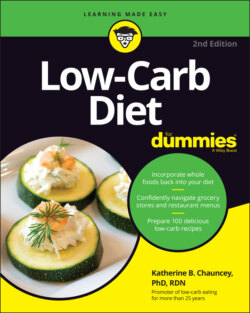Читать книгу Low-Carb Diet For Dummies - Katherine B. Chauncey - Страница 38
THE FRUCTOSE STORY
ОглавлениеAmericans and their children have become high consumers of sugar and sweet-tasting foods and beverages. Caloric sweeteners, most notably high-fructose corn syrup, have dramatically increased in the past 40 or so years. High fructose corn syrup is predominantly used in soft drinks (check the label the next time you drink one), but it’s also found in frozen foods, bakery foods, and vending machine products.
Before 1970, high-fructose corn syrup was unknown in the food supply. However, in the 1970s scientists developed it as an economical way to produce a cheaper sweetener for commercial use. In fact, it’s actually six times sweeter than cane sugar and is produced from corn, which gives food manufacturers a way to sweeten food products at a significant cost savings. By the end of the 1970s, mass-production techniques had been developed to make its use widespread.
Currently, high-fructose corn syrup makes up more than 40 percent of people’s excessively high sugar intake. Fructose was once thought to be used by the body just like sucrose (table sugar). Scientists now know that the body metabolizes high concentrations of fructose differently. Due to this difference, ingesting high concentrations of fructose can increase the likelihood of weight gain and its associated insulin resistance. In addition to obesity, insulin resistance results in glucose intolerance, high triglyceride levels, high blood pressure, fatty liver, and increased risk of diabetes and heart disease.
The current levels of soft drink and sweetened food intake is an aspect of the modern lifestyle unknown in the past. The inclusion of high fructose corn syrup in the food supply parallels the dramatic increase in obesity, diabetes, and insulin resistance. Sweet-tasting foods in the diet stimulate a craving for more sweet foods, which can lead to overconsumption. Low-carbohydrate diets have the advantage of reducing the intake of soft drinks and foods with high-fructose corn sweeteners, but they don’t deal with the desire many Americans have for sweet tastes.
The average American eats nearly 30 pounds of french fries (the size of a small child), almost 50 billion hamburgers, and 2.5 billion servings of chicken nuggets per year. A low-fat hamburger was dropped from a popular fast-food chain due to poor sales — so apparently Americans aren’t buying the low-fat approach when they’re eating fast food.
